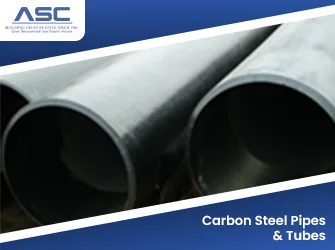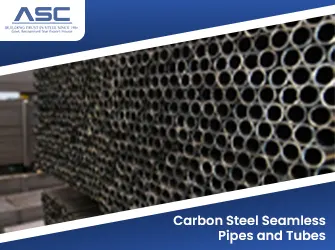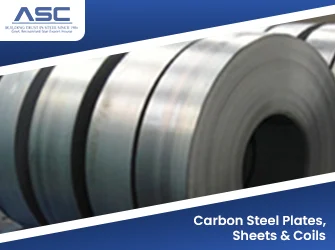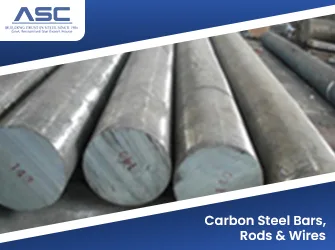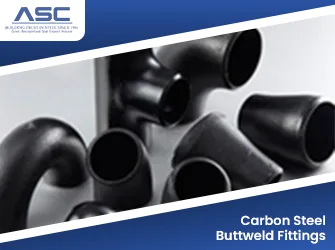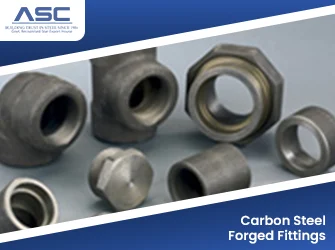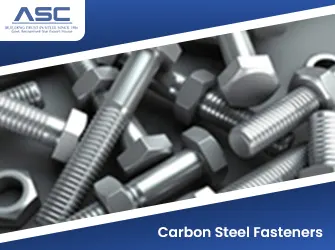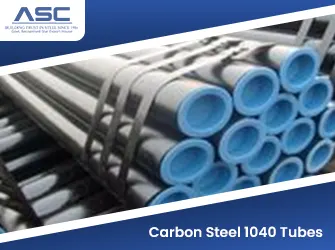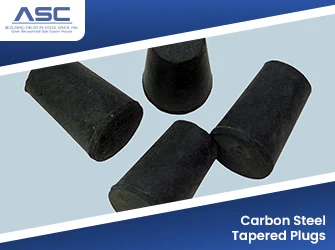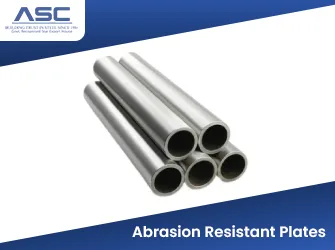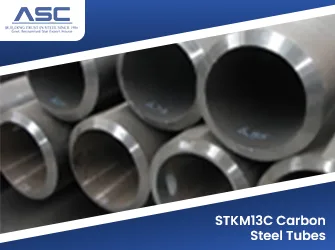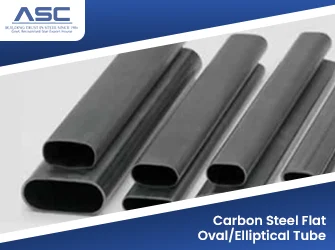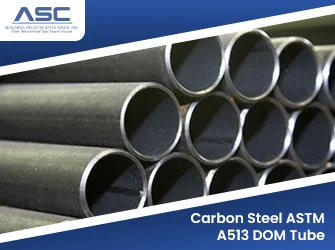Carbon Steel Products Manufacturers, Supplier and Exporter in India
Amardeep Steel is a leading carbon steel products manufacturer, supplier, and exporter in India. We provide a comprehensive range of these products, including pipes & tubes, sheets & plates, bars, fittings, flanges and fasteners to various industries.
Carbon steel stands out as an iron-carbon alloy boasting a significant carbon content, up to 2.1% of its overall weight. This high carbon composition endows carbon steel with remarkable tensile strength, making it a preferred choice in various construction applications, from buildings and bridges to everyday household items like fridges and washing machines.
Carbon steel products from Amardeep Steel can be supplied across the world with ASTM, ASME, and EN specifications. With a diverse range of carbon steel grades, these products find applications in heat exchangers, industrial boilers, and pressure vessels, delivering exceptional performance in demanding environments.
Carbon Steel Products List
Types of Carbon Steel
Carbon steel is classified into four main types based on its carbon content. The amount of carbon significantly influences the steel's hardness, strength, and ductility.
- Low Carbon Steel (or Mild Steel): This is the most common type. It is highly ductile, formable, and easy to weld, making it ideal for a wide range of everyday items.
- Medium Carbon Steel: Offering a good balance of strength and ductility, it is often heat-treated to improve its mechanical properties.
- High Carbon Steel: This type is very strong and hard but lacks ductility, making it suitable for high-wear applications.
- Ultra-High Carbon Steel: Containing the highest carbon content, this steel is exceptionally hard but also quite brittle.
Carbon Steel Chemical Composition
Understanding the chemical composition of carbon steel products is crucial for selecting the right material for your needs. Carbon steel is an alloy of iron and carbon, with small amounts of other elements like manganese, sulfur, phosphorus, and sil added to enhance its properties.
Low Carbon Steel Chemical Composition
Low carbon steel is easy to shape and weld, making it a common choice for general construction.
| Grade | UNS Number | C (max) | Mn (max) | S (max) | P (max) |
|---|---|---|---|---|---|
| 1010 | G10100 | .08-.13% | .30-.60% | 0.05% | 0.04% |
| 1018 | G10180 | .14-.20% | .60-.90% | 0.05% | 0.04% |
| 1020 | G10200 | .17-.23% | .30-.60% | 0.05% | 0.04% |
Medium Carbon Steel Chemical Composition
Medium carbon steel is stronger and harder than low carbon steel, often used for forging and heavy-duty applications.
| Grade | UNS Number | C (max) | Mn (max) | S (max) | P (max) |
|---|---|---|---|---|---|
| 1045 | G10450 | 0.43-0.50% | 0.60-0.90% | 0.05% | 0.04% |
| 1060 | G10600 | 0.55-0.65% | 0.60-0.90% | 0.05% | 0.04% |
High Carbon Steel Chemical Composition
High carbon steel is very hard and strong, with great wear resistance. It's a top choice for tools, blades, and parts that require high strength.
| Grade | UNS Number | C (max) | Mn (max) | S (max) | P (max) |
|---|---|---|---|---|---|
| 1080 | G10800 | 0.75–0.88% | 0.60–0.90% | 0.05% | 0.04% |
| 1095 | G10950 | 0.90–1.03% | 0.30–0.50% | 0.05% | 0.04% |
Mechanical Properties of Carbon Steel
The properties of a carbon steel material depend directly on its carbon content. As the percentage of carbon increases, so does its hardness and strength, while its ductility generally decreases.
| Alloy Type | AISI Grade | Carbon Content | Yield Strength (MPa) | Tensile Strength (MPa) | Ductility (% elongation) |
|---|---|---|---|---|---|
| Low | 1010 | 0.10% | 180 | 325 | 28 |
| Low | 1020 | 0.20% | 205 | 380 | 25 |
| Low | A36 | 0.29% | 220 | 400 | 23 |
| Medium | 1040 | 0.37–0.44% | 415 | 620 | 25 |
| High | 1080 | 0.75–0.88% | 440 | 924 | 12 |
| High | 1095 | 0.90–1.04% | 380 | 665 | 10 |
Carbon Steel Grades
Carbon steel products are available in various grades. Some common ones include:
- A36: A popular structural steel grade used for construction and general fabrication.
- 1018: A common low carbon steel known for its excellent weldability and machinability.
- 1045: A medium carbon steel widely used for shafts, gears, and bolts due to its higher strength.
- 1095: A high carbon steel favored for tools and springs because of its excellent hardness and wear resistance.
Carbon Steel Applications
The versatility of carbon steel products makes them essential across numerous industries.
- A36: A popular structural steel grade used for construction and general fabrication.
- 1018: A common low carbon steel known for its excellent weldability and machinability.
- 1045: A medium carbon steel widely used for shafts, gears, and bolts due to its higher strength.
- 1095: A high carbon steel favored for tools and springs because of its excellent hardness and wear resistance.
Frequently Asked Questions
1. What is the main difference between carbon steel and stainless steel?
The main difference is the presence of chromium. Stainless steel contains a high percentage of chromium (10.5% or more), which creates a passive layer to resist rust. Carbon steel lacks this high chromium content, making it susceptible to corrosion but also more affordable.
2. Is carbon steel magnetic?
Yes, almost all types of carbon steel are highly magnetic due to their high iron content.
3. Can carbon steel rust?
Yes, carbon steel will rust when exposed to moisture and oxygen. To prevent rust, it must be coated or painted.
